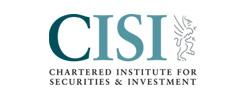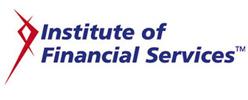"I have known David Henderson for seven years and during that time, he has had full control of my financial investment portfolio through retirement and the consequences of adjustment to widowhood. I have never had any cause to doubt his skilled advice and commitment. This has been delivered through a friendly and totally reliable relationship. I have regarded him as a trustworthy friend and in terms of the financial manoeuvres, his practical adjustments have (thus far in a volatile world!) all been safe and successful. He has been helpfully reassuring at times based on an extensive knowledge of theway the markets and global economy works I find this very educational. I have recommended his services to several friends all of whom have commented most favourably after his input totheir finances."
Annual/Tapered Allowance
Annual Allowance:
Contributions into the scheme are limited by the annual allowance. The Annual Allowance is currently up to a maximum of £60,000 (2024/2025).
High earners, those with an income of more than £200,000 p.a. may have a reduced annual allowance as well as individuals who have already flexibly accessed other pension plans.
There is a potential facility of carrying forward up to 3 years worth of unused relief in some circumstances.
Contributions exceeding the annual allowance, will trigger a tailored tax charge of up to 45%.
Tax relief on any contributions made is limited to £3,600 per annum or 100% of salary if higher subject to the annual allowance.
When made within these permitted limits your contributions are payable after deducting basic rate income tax.
That means that if, for example, as a basic rate tax payer, you wanted to pay £1,000 into your pension, you would actually pay £800. The scheme administrator will then reclaim the additional £200 of tax from HMRC and invest it for you into your SIPP.
If you are a higher rate taxpayer, you will be able to reclaim the higher rate tax on your annual self-assessment tax return subject to the annual allowance, which results in an amended tax code (so more take home pay).
Your employer can also contribute directly on your behalf and will normally receive Corporation Tax relief as a business expense.
Tapered Annual Allowance
To complicate matters further, from 6 April 2023, individuals who have an ‘adjusted income’ greater than £260,000 in any given tax year will have their AA reduced (tapered) for that tax year. (Note, it is not possible to use salary exchange to reduce your income below £200,000, as employer contributions are included in the definition of ‘adjusted income’).
Threshold Income
If your income in a tax year falls below the ‘Threshold Income’ – currently £200,000 – then the Tapered Annual Allowance will not be applied, regardless of your ‘adjusted income’ for the same tax year.
If your Threshold Income is above £200,000, then the Tapered Annual Allowance will need to be tested.
The maximum reduction is £50,000, this happens when 'adjusted income' is over £360,000., which means that the minimum tapered AA is £10,000.
Members of the NHS or University Pension Scheme do not have the scope to reduce funding levels to below their AA. Instead, they can choose to:
- Remain in the pension scheme and suffer the tax.
- Leave the NHS or University Pension Scheme and fund using a personal pension, up to the reduced AA, and then use your allowances for the new Individual Savings Accounts (NISA).
Critical to your decision is how much employer funding will be lost.
If you wish guidance on your options regarding the Tapered Annual Allowance please contact us.
Pensions are a long-term investment. You may get back less than you put in. Pensions can be and are subject to tax and regulatory change therefore the tax treatment of pension benefits can and may change in the future.










